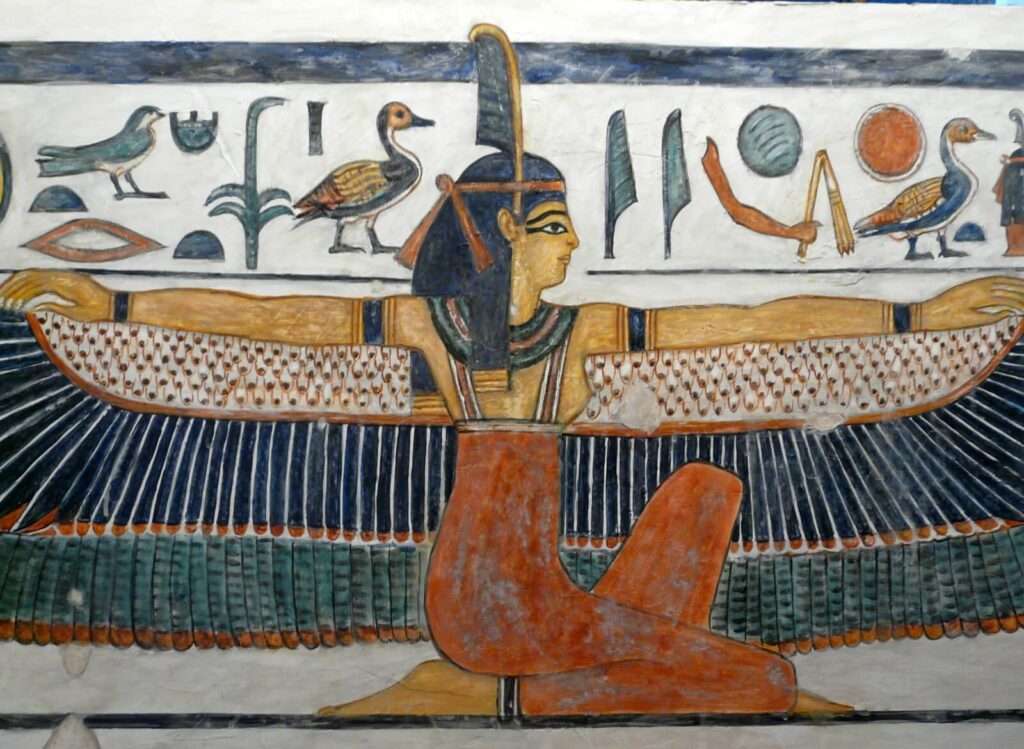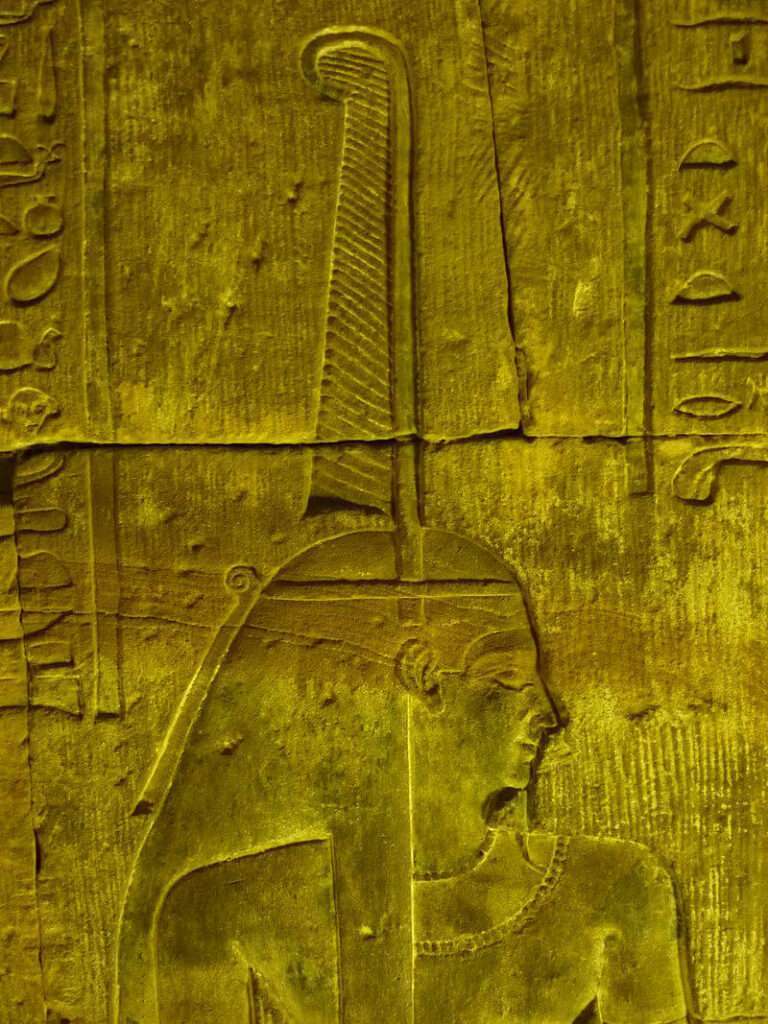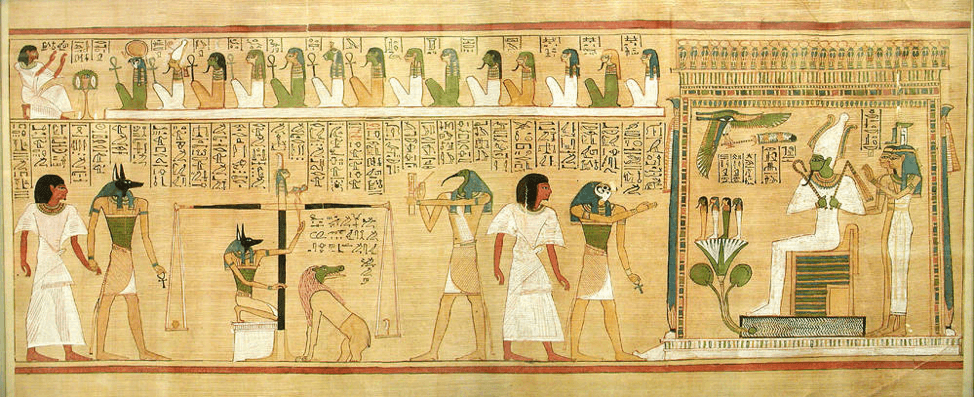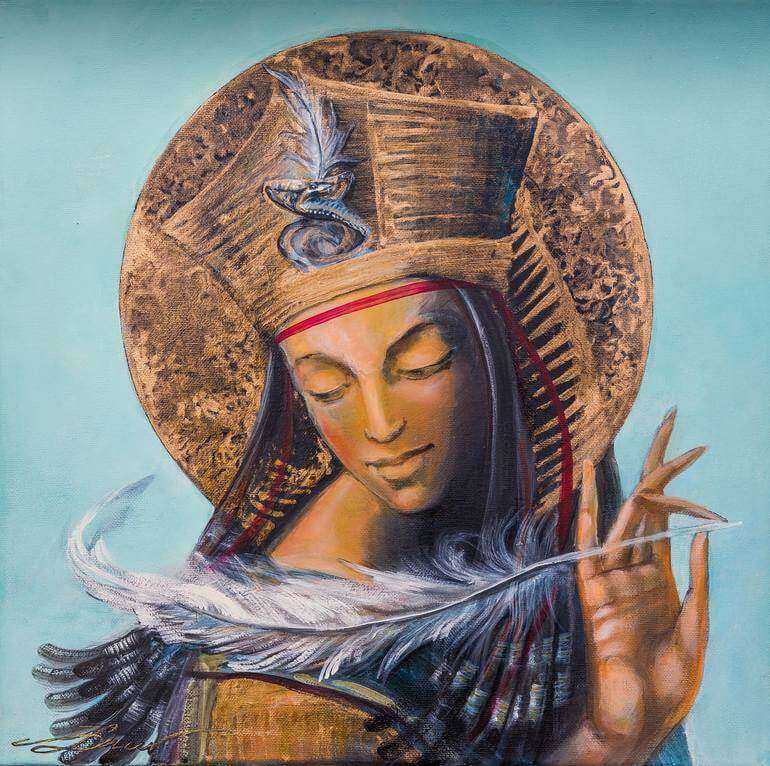In ancient Egyptian mythology, Maat stands distinct, symbolizing balance, truth, and order. Represented by the iconic ostrich feather, her principles resonate beyond mere worship, influencing the moral compass and cosmic perspectives of the civilization. This exploration delves into Maat’s multifaceted essence and her enduring legacy.
| Origin | Ancient Egyptian Civilization |
|---|---|
| Classification | Goddess/Concept |
| Family Members | Ra (Father) in some accounts, Thoth (Husband) in others |
| Region | Egypt |
| Associated with | Truth, Balance, Order, Justice, Morality |
1. Historical Background of Maat
1. Historical Background of Maat
Maat’s presence in ancient Egyptian civilization is deeply rooted in the Old Kingdom, an era marked by pyramids, evolved religious thought, and rich artistic expression. Her earliest mentions are found in the Pyramid Texts, ancient scriptures that outlined the journey of pharaohs to the afterlife. Over time, her influence permeated other sacred writings, including the Middle Kingdom’s Coffin Texts and the New Kingdom’s Book of the Dead.

In the realm of Egyptian cosmology, Maat’s role is paramount. According to the Heliopolitan creation myth from Heliopolis, when the sun god Ra emerged from the primordial waters of Nun, Maat’s principles countered the inherent chaos. She played an integral part in maintaining the cosmic order, especially evident in Ra’s daily rebirth and journey across the sky. Maat wasn’t a mere observer; she actively ensured the balance between order and chaos, making her a pivotal figure in both the cosmos and the daily lives of the ancient Egyptians.
2. Symbolism and Representations of Maat
In the labyrinthine symbolism of ancient Egyptian culture, Maat stood as a beacon of moral and cosmic integrity. Her representations were not mere decorative elements but profound emblems that echoed her significance in the hearts and minds of the Egyptians.
The ostrich feather, symbolizing Maat, represents purity, truth, and balance due to its immaculate and symmetrical form. Beyond being decorative, it played a pivotal role in the “Weighing of the Heart” ritual. In the afterlife, a person’s heart was weighed against this feather. If the heart, reflecting one’s deeds, matched or was lighter than the feather, the soul achieved eternal life. If heavier, the soul was consumed by Ammit, a formidable deity with a crocodile’s head and a lion’s body. This ritual highlights the feather’s profound religious significance and its central role in determining a soul’s fate.

Moving on to iconography, Maat’s depictions in ancient Egyptian art and hieroglyphs are vast and varied. In many representations, she is portrayed as a woman wearing a crown adorned with her emblematic ostrich feather. In some, she is shown presenting the feather to the gods, indicating her role as a divine arbiter. Hieroglyphic inscriptions often used the symbol of the ostrich feather to represent the concept of ‘truth’ and ‘order’, which further signifies the intertwining of the deity and the principles she embodied. These depictions were not mere artistic expressions but deeply intertwined with religious rites, tomb inscriptions, and daily invocations, making Maat’s iconography a constant reminder of the balance, truth, and order she epitomized.
3. Maat’s Role in Daily Egyptian Life and Afterlife
While many deities of ancient civilizations often remained aloof, their presence reserved for temples and grand ceremonies, Maat’s influence was deeply ingrained in both the mundane and the spiritual realms of ancient Egypt.
Daily Life and the Concept of Ma’at (Order vs. Chaos)
In the daily lives of ancient Egyptians, the concept of Ma’at was not just a religious tenet; it was a guiding principle for societal harmony and personal conduct. This balance between order and chaos, embodied by Ma’at, was seen as the very fabric holding the universe together. Pharaohs declared themselves as the “Lords of Ma’at”, emphasizing their commitment to uphold justice, truth, and harmony in their reign. Moreover, the principle of Ma’at was evident in legal systems, where it underscored the importance of fairness and equity. On a more personal level, individuals sought to live in accordance with Ma’at by being truthful, honorable, and just in their interactions. This continual striving for balance ensured societal cohesion and deterred the forces of chaos, embodied by the deity Apep, from overwhelming the world.

The Weighing of the Heart Ceremony and Maat’s Role
The afterlife was a significant facet of Egyptian spiritual beliefs, and the “Weighing of the Heart” ceremony stood as the ultimate judgment of one’s life. In this pivotal rite, the deceased’s heart, representative of their deeds and intentions, was placed on a scale opposite Maat’s ostrich feather. This was not just a passive comparison but a profound examination of the individual’s adherence to the principles of Ma’at throughout their life.
Maat’s role in this ceremony was not just symbolic; she was the very standard against which a life was measured. If the heart was found to be in balance with the feather, it indicated that the deceased had led a life in alignment with the principles of truth, balance, and righteousness. Such souls were then granted passage to the Field of Reeds, a paradisiacal realm. However, if the heart was heavier, it was a testament to a life led astray from Ma’at’s principles. Such unfortunate souls faced annihilation by the fearsome Ammit.
Through this ceremony, Maat’s role as the arbiter of truth and justice was emphasized, reminding every Egyptian of the imperativeness of living in harmony with the divine principles she represented.
4. Comparison with Other Deities:
Across the vast spectrum of ancient mythologies, deities have played multifaceted roles, representing various aspects of life, nature, and human emotions. Maat, with her unique emphasis on balance, truth, and order, holds a special place not only within the Egyptian pantheon but also when contrasted with deities of other cultures.
Within the Egyptian Pantheon
Within the Egyptian pantheon, many deities had specific domains, from love and warfare to the sun and the Nile. While goddesses like Isis represented motherhood and magic or Hathor symbolized love, music, and dance, Maat’s domain was more abstract. She wasn’t just associated with a specific aspect of life; she was the embodiment of a moral and cosmic order.
- Isis: While Isis’s role predominantly revolved around motherhood, protection, and magic, Maat’s influence was more overarching, guiding the principles upon which society functioned.
- Hathor: Hathor, often depicted as a cow goddess, represented joy, feminine love, and motherhood. Maat, on the other hand, transcended these personal attributes, representing a universal principle vital for the balance of the cosmos.
- Sekhmet: The lioness goddess Sekhmet was a deity of war and healing. While she could bring about destruction, Maat’s role was to maintain order and prevent chaos, making her a counterbalance to the more destructive forces in the pantheon.

Comparison with Deities from Other Cultures
When we step outside the boundaries of Egypt and venture into the mythologies of other ancient cultures, parallels and contrasts with Maat can be drawn:
- Themis (Greek Mythology): Themis, a Titaness in Greek mythology, was the embodiment of divine order, law, and custom, making her a close counterpart to Maat. Both goddesses emphasize justice and order, and their roles in their respective pantheons underscore the importance of these principles.
- Asha (Zoroastrianism): In Zoroastrian belief, Asha represents truth, righteousness, and order, quite akin to Maat’s principles. Both Asha and Maat stand against chaos and falsehood, ensuring the universe’s right functioning.
- Dike (Greek Mythology): Another Greek parallel, Dike was the goddess of justice, fair judgements, and the rights established by custom and law. While her domain aligns closely with some aspects of Maat, Dike’s focus is more on human-made law, whereas Maat represents a universal, cosmic order.
In essence, while Maat holds specific attributes unique to the Egyptian worldview, her emphasis on balance, truth, and order finds echoes in various cultures, emphasizing the universality of these principles across different civilizations.
5. Modern Interpretations and Influence of Maat
The tendrils of ancient myths and beliefs often seep into modernity, coloring our arts, philosophy, and societal norms. Maat, with her profound emphasis on balance, truth, and order, is no exception. Even as the sands of time have shifted, her principles have left indelible marks on contemporary thought and culture.
Maat’s Influence on Modern Culture, Literature, and Philosophy
While ancient Egypt seems a world away, its influence is pervasive in modern cultural expressions:
- Literature: Modern authors, inspired by the depth of Egyptian mythology, often weave Maat’s principles into their narratives. Whether it’s a quest for truth in a detective story or the larger theme of balance in dystopian novels, the essence of Maat resonates in contemporary literature.
- Art and Media: From films to visual arts, the imagery of the scales of justice, reminiscent of the “Weighing of the Heart” ceremony, is prevalent. Moreover, Maat’s iconography, especially the ostrich feather, has been adopted in various artistic expressions symbolizing truth and order.
- Philosophy: Philosophers, particularly those exploring ethics and morality, often find parallels between Maat’s principles and modern discussions about justice, truth, and societal order. Her emphasis on balance and harmony aligns with many contemporary philosophical discourses about equilibrium in society and individual lives.

Reflection on the Contemporary Relevance of Maat’s Principles
In today’s rapidly changing world, where societal structures are constantly evolving and moral compasses are often tested, Maat’s principles stand as a beacon:
- Environmental Balance: In the face of environmental crises, the principle of balance that Maat championed is a call for harmonious coexistence with nature, emphasizing sustainable living and respect for the natural world.
- Truth in the Digital Age: With the digital era comes an information overload, where truth is often obscured. Maat’s unwavering emphasis on truth encourages critical thinking and discernment in the age of misinformation.
- Social Justice: Movements for equality and justice resonate deeply with Maat’s principles. Her emphasis on order, justice, and truth is a timeless reminder of the ideals that societies should strive for.
- Personal Harmony: On a personal level, Maat’s principles encourage individuals to seek balance in their lives, fostering mental well-being and a harmonious existence.
In essence, while Maat is an ancient deity, her principles are timeless, acting as guiding stars in the vast constellation of modern life, reminding humanity of the core values that ensure harmony, truth, and order.
6. Expert Opinions and Insights on Maat
To comprehend Maat’s vast and profound influence, it’s invaluable to tap into the minds of experts who have dedicated their lives to studying ancient Egypt. Their insights and interpretations provide depth and nuance to our understanding of this pivotal deity.
Quotes and Insights from Renowned Experts
- Dr. Aiden Marcus, a leading Egyptologist at the University of Cairo, notes: “Maat is not just a deity to the ancient Egyptians; she is the embodiment of a worldview, a philosophy that underscores every facet of their life. From the mightiest pharaoh to the simplest farmer, Maat’s principles of balance and truth were foundational.”
- Professor Helena Rothman, author of “The Feathered Truth: Unveiling Maat”, comments: “The ‘Weighing of the Heart’ ceremony is more than a ritual. It’s a reflection of the ancient Egyptian consciousness – a testament to their deep-rooted belief in justice and the consequences of one’s actions in the mortal realm and beyond.”
- Cultural analyst Dr. Jorge Alvarez draws parallels between Maat and modernity: “In today’s tumultuous world, the principles of Maat – balance, truth, harmony – are more relevant than ever. They remind us of the perennial human quest for equilibrium amidst chaos.”
Debates and Differing Viewpoints
Despite a consensus on Maat’s significance, there exist debates and differing interpretations among scholars:
- Nature of Maat: Some scholars argue that Maat should be seen more as a concept than a deity. While she is personified in many texts and artworks, her abstract principles are often more emphasized than her godly attributes.
- Origins of Maat: While the Pyramid Texts provide the earliest mentions of Maat, there is debate among historians about her possible pre-dynastic origins and the evolution of her role over time.
- Interactions with Other Deities: The nature of Maat’s relationship with other deities, especially Ra, is a topic of discussion. Some scholars believe Maat was subordinate to Ra, guiding his path, while others argue she was an independent force, ensuring the sun god adhered to cosmic order.
- Modern Interpretations: As with many ancient symbols and deities, there’s a debate on how Maat’s principles should be interpreted and applied in contemporary contexts, with some arguing for strict traditional interpretations and others advocating for more flexible, modern adaptations.
In conclusion, while Maat’s influence and significance are undeniable, the realm of Egyptology is vibrant with debates and discussions that enrich our understanding of this ancient deity. Delving into these expert opinions and insights not only deepens our comprehension but also ignites a fascination with the intricacies of ancient Egyptian beliefs.
Conclusion
Maat’s profound influence on ancient Egypt transcends time, echoing universal truths about harmony, truth, and justice. Her teachings, symbolized by the ostrich feather, serve as a timeless reminder of the importance of balance in life. Delving into her legacy encourages reflections on these enduring principles and their relevance in today’s world.
